Why Tashilhunpo Monastery Complex Should Be on Your Travel Bucket List
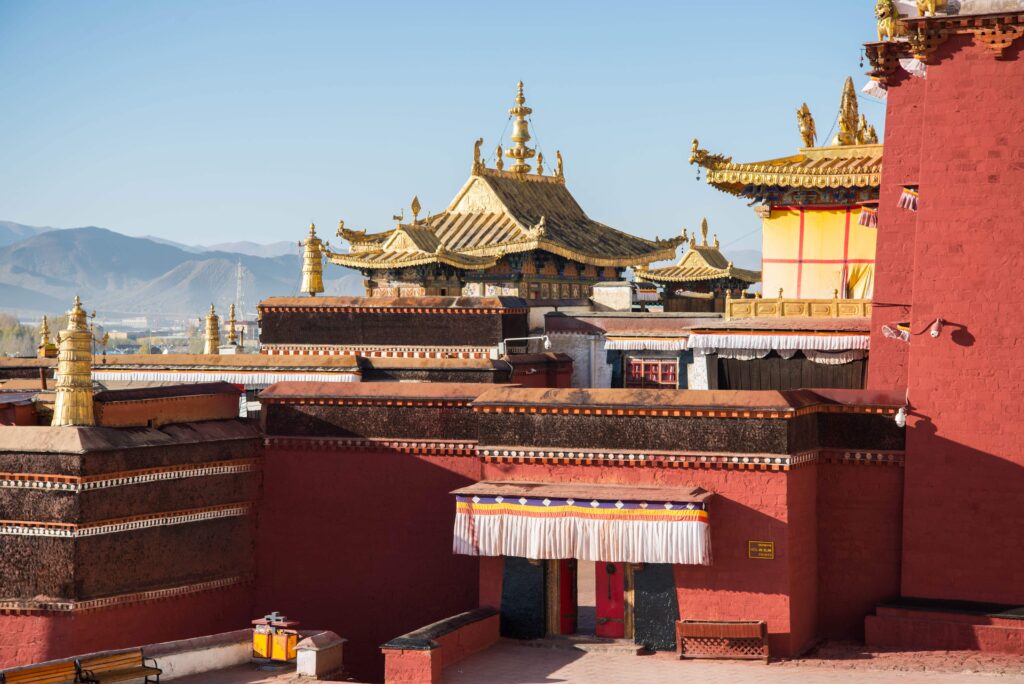
An Essential Guide to Visiting Tashilhunpo Monastery Complex
Nestled on the southern slopes of the Nyiseri Mountain, the Tashilhunpo Monastery Complex is a beacon of Tibetan heritage and spirituality, captivating travelers with its rich history and breathtaking architecture. Founded in 1447 by Gedun Drupa, the first Dalai Lama, this sprawling complex is not only the largest monastery in Shigatse but also the traditional seat of the Panchen Lamas, who are revered as Tibet’s second highest spiritual leaders. As you approach the monastery, the vibrant colors of fluttering prayer flags and the intricate carvings adorning its walls beckon you closer, promising an immersion into the heart of Tibetan Buddhism.
Visitors to Tashilhunpo are treated to a unique tapestry of spiritual practices and cultural expressions. From the majestic Coqen Hall to the serene Chapel of Jampa, every corner of the complex offers a glimpse into the deep-rooted traditions and architectural brilliance of the Gelugpa School of Tibetan Buddhism. Whether you’re wandering the scenic kora encircling the monastery alongside devout pilgrims or witnessing the mesmerizing debates and scripture chanting by local monks, each experience here is a testament to the living legacy of Tibetan faith.
Timing your visit with the annual Tashilhunpo Monastery Festival will elevate your experience further, as the giant Thangka Buddha paintings are unveiled, drawing crowds in awe and reverence. With an altitude of 3,800 meters (12,000 feet), the monastery also rewards those who venture here with awe-inspiring vistas of Shigatse City and beyond, making it a must-visit destination for any traveler seeking to delve into the spiritual and cultural fabric of Tibet. Prepare to embark on a journey that transcends time, where ancient rituals and breathtaking landscapes converge in one of the most significant religious sites in the world.
In This Guide
- An Essential Guide to Visiting Tashilhunpo Monastery Complex
- The Rich History and Legends of Tashilhunpo Monastery Complex
- Main Highlights: What You Absolutely Can’t Miss
- Planning Your Visit: A Practical Guide
- Tickets: Prices, Booking, and Tips
- How to Get There: A Complete Transportation Guide
- Local Cuisine and Accommodation Nearby
- Frequently Asked Questions
- Final Thoughts on Your Trip
The Rich History and Legends of Tashilhunpo Monastery Complex
Nestled against the backdrop of Nyiseri Mountain, the Tashilhunpo Monastery Complex in Shigatse, Tibet, is a testament to the rich tapestry of Tibetan history and spirituality. Founded in 1447 by Gedun Drupa, the first Dalai Lama, this significant religious site stands as the traditional seat of the Panchen Lamas, revered as Tibet’s second highest incarnation. As one of the Great Six Gelugpa Monasteries, Tashilhunpo has long been a beacon of Tibetan Buddhism, drawing pilgrims and visitors from around the world.
The name “Tashilhunpo,” which translates to “Heap of Glory,” is reflective of its esteemed status within Tibetan culture. The monastery’s establishment marked the beginning of a new era for Tibetan Buddhism, as it became a center for learning and spiritual practice. Gedun Drupa, who founded the monastery, was not only a spiritual leader but also a significant figure in the development of the Gelug school of Tibetan Buddhism, emphasizing monastic discipline and scholarship.
Throughout its storied history, Tashilhunpo has played a pivotal role in the spiritual and political landscape of Tibet. It has survived various challenges, including political upheaval and cultural revolutions, while maintaining its status as a symbol of faith and resilience. The monastery is renowned for its unique architectural features, including the majestic Coqen Hall and the intricately decorated Chapel of Jampa, which house remarkable statues and religious artifacts.
Legends abound within the walls of Tashilhunpo, enriching its historical narrative. One notable tale speaks of the miraculous appearances of the Panchen Lamas, believed to embody the wisdom of Avalokiteshvara, the bodhisattva of compassion. These legends not only highlight the monastery’s spiritual significance but also its role as a guardian of Tibetan culture and traditions.
Each year, Tashilhunpo comes alive during the Tashilhunpo Monastery Festival, a vibrant celebration where thousands gather to witness the unveiling of giant thangka paintings. This event encapsulates the essence of Tibetan spirituality, showcasing profound artistry and devotion. The festival serves as a reminder of the monastery’s historical importance and its continued relevance in contemporary Tibetan society.
Today, Tashilhunpo Monastery Complex stands not only as a historical monument but as a living institution where the teachings of Buddhism are practiced and preserved. Visitors are invited to explore its sacred halls, participate in the rhythmic chanting of scriptures, and witness the fervent debates among monks, offering a glimpse into the rich intellectual and spiritual life of the monastery.
In essence, Tashilhunpo Monastery Complex is a microcosm of Tibetan history, culture, and spirituality. Its enduring legacy, captured through centuries of devotion and learning, invites travelers to immerse themselves in the profound narratives that shape the heart of Tibet.
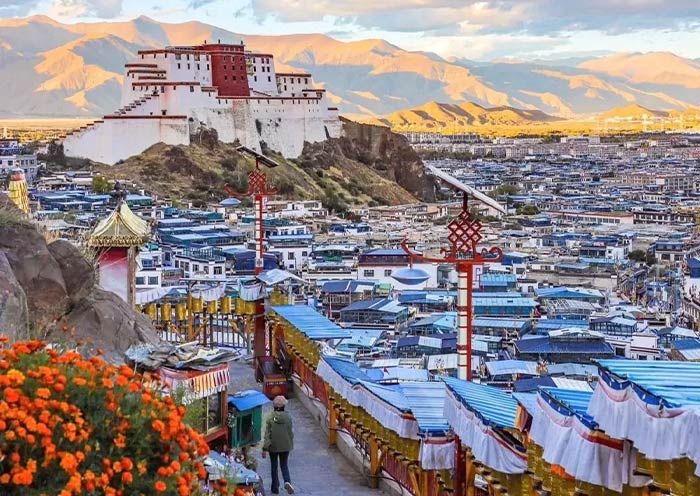
Tashilhunpo Monastery Complex.
Main Highlights: What You Absolutely Can’t Miss
Tashilhunpo Monastery, perched on the southern slope of Nyiseri Mountain in the vibrant city of Shigatse, is a treasure trove of Tibetan culture and spirituality. Founded in 1447 by Gedun Drupa, the first Dalai Lama, this sprawling complex is renowned for its stunning architecture and profound religious significance. Here are the main highlights you absolutely cannot miss during your visit:
1. Coqen Hall
Step into the heart of Tashilhunpo Monastery by visiting Coqen Hall, the largest hall in the complex. This grand structure houses a magnificent statue of Maitreya Buddha, symbolizing the future Buddha. The hall is adorned with intricate murals and decorations that showcase the rich artistic traditions of Tibetan Buddhism. Take your time to absorb the spiritual ambiance and engage in quiet contemplation.
2. The Chapel of Jampa
Don’t miss the Chapel of Jampa, dedicated to the future Buddha. This serene space is characterized by its tranquil atmosphere and exquisite thangkas (traditional Tibetan paintings). The captivating artwork and the spiritual energy of this chapel offer a glimpse into the deep-rooted beliefs of Tibetan culture.
3. The Four Great Dratsangs
Explore the Four Great Dratsangs, or colleges, which are essential for the education of monks. Each Dratsang focuses on different aspects of Buddhist teachings and philosophy. Engage with the monks, if possible, to learn about their rigorous studies and the vibrant debates that occur within these walls.
4. Kora Circuit
Embark on the scenic kora (circumambulation) that winds around the monastery. As you walk in the company of devoted pilgrims, enjoy breathtaking views of Tashilhunpo and Shigatse City. The kora not only offers a spiritual experience but also a chance to witness the daily rituals of the local people.
5. Tomb of the Panchen Lamas
Pay your respects at the ancient tombs of the fourth and tenth Panchen Lamas, two of the most revered figures in Tibetan Buddhism. The dazzling chortens (stupas) that mark their resting places are exquisite examples of Tibetan architecture and serve as a reminder of their significant contributions to Tibetan culture.
6. Buddhist Debates and Scripture Chanting
If your timing is right, witness the lively Buddhist debates and scripture chanting that occur regularly in the monastery. These vibrant sessions provide a unique insight into the intellectual traditions of Tibetan Buddhism and the rigorous training monks undergo. The atmosphere is charged with energy and devotion, making it a must-see experience.
7. Tashilhunpo Monastery Festival
If you can, plan your visit during the Tashilhunpo Monastery Festival, a vibrant celebration featuring the unveiling of three Giant Thangka Buddhas—Amitabha, Sakyamuni, and Maitreya. This festival is not just a visual spectacle; it’s a profound cultural experience that allows you to connect with the local community and traditions.
8. Prayer Flags and Murals
As you explore the monastery, take a moment to appreciate the colorful prayer flags fluttering in the wind and the intricate murals that adorn the walls. Each flag carries prayers and blessings, while the murals depict significant events in Buddhist history, offering rich narratives that enhance your understanding of Tibetan spirituality.
9. The Panchen Lama’s Impact
Understanding the historical significance of the Panchen Lama, the second highest incarnation in Tibetan Buddhism, adds depth to your visit. Tashilhunpo Monastery serves as his traditional seat, and learning about his teachings and influence will enrich your appreciation of the site.
Final Thoughts
Tashilhunpo Monastery is more than just a religious site; it’s a living museum of Tibetan culture, spirituality, and history. From its stunning architectural features to its vibrant festivals, every corner of this monastery complex offers a unique glimpse into the heart of Tibetan Buddhism. Make sure to allocate enough time to soak in the atmosphere and engage with the local traditions as you explore this sacred site.
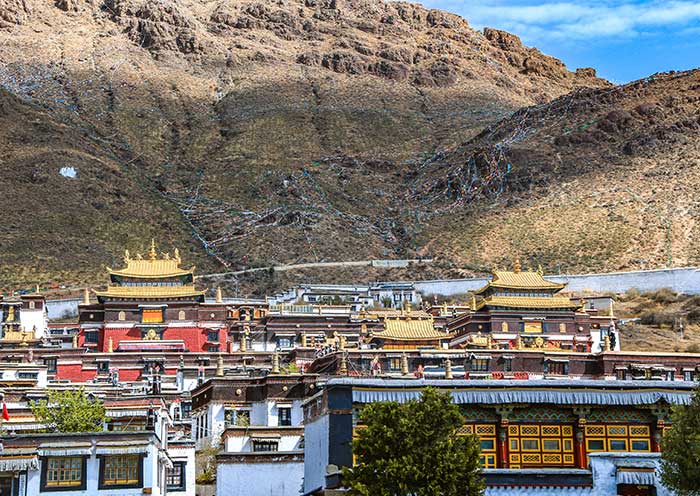
Tashilhunpo Monastery Complex.
Planning Your Visit: A Practical Guide
Getting Ready for Your Journey to Tashilhunpo Monastery Complex
Visiting Tashilhunpo Monastery Complex is a profound experience that intertwines spirituality, history, and breathtaking landscapes. To ensure you make the most of your visit, here’s a comprehensive guide packed with practical information and tips.
Location and Access
Where to Find It:
Tashilhunpo Monastery is situated on the southern slope of Nyiseri Mountain, just a short five-minute drive from the center of Shigatse, Tibet’s second-largest city.
Getting There:
– From Lhasa: The monastery is approximately 269 kilometers (about 167 miles) from Lhasa. You can hire a private car or join a guided tour, which typically takes around five hours. Another option is to take the Tibet train to Shigatse and then a local transfer to the monastery.
– Local Transportation: Once in Shigatse, you can easily reach the monastery by taxi or organized tour transport.
Opening Hours and Admission
When to Visit:
– Opening Hours: The monastery welcomes visitors from 9:00 AM to 5:00 PM.
– Admission Fees: Entrance fees vary by season: 100 CNY per person from May to October, and 55 CNY from November to April. Be prepared to show your ID.
Best Time to Visit
The ideal months to visit Tashilhunpo Monastery are from April to October when the weather is generally milder and the skies are clearer. If you’re interested in experiencing local culture, plan your visit around the Tashilhunpo Monastery Festival, typically held in the summer. This festival showcases vibrant local traditions, including the unveiling of giant thangka paintings.
What to See and Do
Architectural Highlights:
– Coqen Hall: The heart of the monastery, featuring stunning murals and statues.
– Chapel of Jampa: Home to a giant statue of the Future Buddha, Maitreya.
– The Four Great Dratsangs: Explore these renowned teaching halls that house the monks’ debates.
– Sutra Halls and Kamcuns: Discover the vast collection of sacred texts and artifacts.
Scenic Kora:
Join pilgrims in a serene walk around the monastery on the kora, which offers stunning views of both the monastery and Shigatse City, including the distant Shigatse Dzong.
Cultural Experiences:
– Debates and Chanting: If your schedule permits, observe the lively Buddhist debates or participate in scripture chanting sessions. These activities provide a unique insight into the daily lives of the monks and their devotion to their faith.
Practical Tips
-
Altitude Awareness: Tashilhunpo Monastery is located at an altitude of 3,800 meters (12,000 feet). Be mindful of altitude sickness; acclimatize properly, stay hydrated, and consider resting if you experience symptoms.
-
Dress Code: As a place of worship, dress modestly. It’s advisable to wear comfortable shoes for walking around the complex.
-
Photography: While photography is allowed in many areas, respect the local customs and avoid taking photos in sensitive areas, especially during prayer sessions.
Nearby Attractions
If time permits, consider visiting other significant sites in the area, such as:
– Mount Everest: An iconic destination for adventurers.
– Pelkor Chode Monastery and Kumbum Stupa: Located in Gyantse, these sites are rich in history and stunning architecture.
Final Thoughts
Tashilhunpo Monastery Complex is more than just a historical site; it is a living symbol of Tibetan culture and spirituality. By planning your visit thoughtfully, you can engage deeply with the rich heritage and breathtaking beauty of this sacred place. Enjoy your journey into the heart of Tibet!
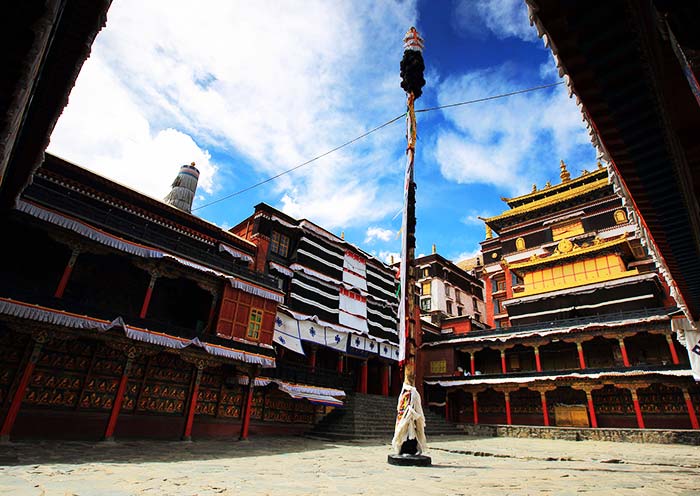
Tashilhunpo Monastery Complex.
Tickets: Prices, Booking, and Tips
When planning your visit to the Tashilhunpo Monastery Complex in Shigatse, Tibet, understanding the ticketing process can enhance your experience. Here’s what you need to know about ticket prices, booking options, and essential tips for a smooth visit.
Ticket Prices
- General Admission:
- May to October: 100 CNY per person
- November to April: 55 CNY per person
These prices provide access to the monastery’s stunning architecture and various halls, including the Coqen Hall and the Chapel of Jampa, as well as the opportunity to witness the vibrant local culture and possibly the famous Tashilhunpo Monastery Festival.
Booking Options
Tickets can typically be purchased on-site at the entrance of the monastery. However, if you’re traveling with a tour operator or as part of a guided tour, your entry fee may be included in your package. It’s advisable to book your tours in advance, especially during the peak tourist season (May to October), to secure your spot and potentially benefit from early booking discounts.
Tips for Your Visit
-
Plan Ahead: Given the high elevation of the monastery (3,800 meters or 12,000 feet), acclimatization is crucial. Arriving in Shigatse a day early can help you adjust to the altitude.
-
Timing Your Visit: The monastery is open daily from 9:00 AM to 5:00 PM. For a truly immersive experience, consider visiting during the morning hours when you can watch monks engage in scripture chanting and debates.
-
Festival Timing: If possible, align your visit with the Tashilhunpo Monastery Festival, usually held annually. This festival features the unveiling of giant thangka paintings and is a spectacular display of Tibetan culture and spirituality.
-
Transport: Reaching Tashilhunpo Monastery is convenient. You can hire a private vehicle or join a guided tour from Lhasa, which typically takes around 5 hours. Alternatively, you can take a train to Shigatse and then a local taxi or tour vehicle to the monastery.
-
Dress Appropriately: As a place of worship, modest dress is recommended. Comfortable shoes are essential for walking, especially if you plan to do the kora (circumambulation) around the monastery.
By preparing in advance and understanding the ticketing process, you can fully immerse yourself in the rich spiritual atmosphere of Tashilhunpo Monastery, making your visit a memorable highlight of your Tibetan journey.
How to Get There: A Complete Transportation Guide
Visiting Tashilhunpo Monastery Complex offers a profound glimpse into Tibetan culture, spirituality, and history. To ensure your journey to this remarkable site is smooth and enjoyable, here’s a comprehensive guide on how to reach the monastery, whether you’re coming from Lhasa or other parts of Tibet.
Getting to Tashilhunpo Monastery
From Lhasa to Shigatse
- By Private Car or Tour Vehicle:
- Distance: Approximately 269 kilometers (167 miles)
- Travel Time: Around 5 hours
-
Description: The most convenient way to reach Tashilhunpo Monastery is by hiring a private car or booking a tour that includes a clean and safe vehicle with an experienced local guide and driver. The scenic drive takes you through breathtaking landscapes, allowing you to soak in the beauty of the Tibetan plateau.
-
By Train:
- Route: Take the Tibet Railway to Shigatse.
- Travel Time: The train journey may take about 6-7 hours.
- Details: The train ride offers stunning views of the Tibetan landscape. Once you arrive in Shigatse, you can take a local taxi or a pre-arranged shuttle service to the monastery, which is only a short drive away (about 10 minutes).
Local Transportation in Shigatse
- Taxis: Once in Shigatse, taxis are readily available for hire. Ensure the driver knows your destination—Tashilhunpo Monastery.
- Walking: For those who enjoy a bit of exercise, the monastery is only a 5-minute drive from the city center. If you’re up for it, a leisurely walk can also be a delightful way to immerse yourself in the local atmosphere.
Important Tips for Travelers
-
Altitude Awareness: Tashilhunpo Monastery is situated at an altitude of 3,800 meters (12,000 feet). Be sure to acclimatize to the altitude before your journey to avoid altitude sickness. Stay hydrated and take it slow during your travels.
-
Transportation Arrangements: If you’re traveling during peak tourist seasons (May to October), it’s advisable to book your transportation in advance. This ensures you have a reliable means of getting to the monastery.
-
Opening Hours and Ticketing: The monastery is open daily from 9:00 AM to 5:00 PM. Entry costs 100 CNY per person from May to October and 55 CNY from November to April.
-
Cultural Sensitivity: When visiting the monastery, dress modestly and be respectful of local customs and traditions. Engaging with monks or participating in rituals can enrich your experience but always do so with respect and understanding.
Conclusion
Reaching Tashilhunpo Monastery is an adventure that begins long before you set foot inside its sacred halls. Whether you opt for a scenic drive from Lhasa or a train journey through the stunning Tibetan landscape, the experience is sure to be unforgettable. Prepare well, respect the local culture, and enjoy your exploration of one of Tibet’s most significant religious sites.
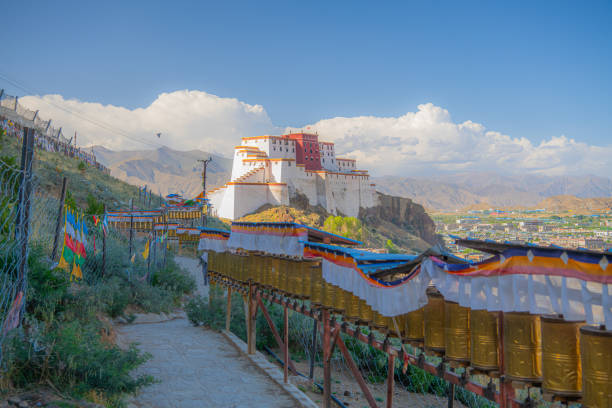
Tashilhunpo Monastery Complex.
Local Cuisine and Accommodation Nearby
When visiting the Tashilhunpo Monastery Complex, a journey through the flavors and hospitality of Tibet is an essential part of your experience. Nestled in the vibrant city of Shigatse, this area offers a delightful range of local cuisine and comfortable accommodations, ensuring that your stay is as enriching as your explorations of Tibetan culture.
Culinary Delights
1. Local Restaurants:
-
Tashi Restaurant: Located just a short walk from the monastery, Tashi Restaurant is known for its authentic Tibetan dishes. Don’t miss the Momo (steamed dumplings filled with meat or vegetables) and Thukpa (noodle soup), both staples that provide a hearty meal after a day of exploration.
-
Shigatse Kitchen: This cozy eatery serves a variety of Tibetan and Chinese dishes. The Yak Meat Stir-Fry is highly recommended, offering a unique taste of local livestock. Pair it with a cup of traditional Butter Tea for a truly Tibetan experience.
-
Buddha Café: A favorite among travelers, this café is perfect for a light lunch or a refreshing drink. Try their Tibetan Bread served with honey and tea, or opt for their vegetarian options, which include delicious Chow Mein and fresh salads.
2. Street Food:
For a more casual dining experience, be sure to explore the local street food stalls. Savor Laphing, a cold, spicy noodle dish, or grab a quick bite of Kebabs from vendors who grill meat over open flames. These quick eats are not only delicious but also give you a taste of everyday life in Shigatse.
Accommodation Options
1. Hotels:
-
Shigatse Jinjiang Hotel: This modern hotel offers comfortable rooms with stunning views of the surrounding mountains. With amenities like free Wi-Fi and an on-site restaurant, it’s a great place to unwind after a long day of sightseeing.
-
Tashilhunpo Monastery Hotel: Just a stone’s throw from the monastery, this hotel provides an authentic Tibetan experience with traditional decor and warm hospitality. Guests can enjoy a peaceful night’s sleep before embarking on another day of exploration.
2. Guesthouses:
-
Tashi Doma Guesthouse: A budget-friendly option that offers a cozy atmosphere and a chance to meet fellow travelers. The owner is known for her warm hospitality and can provide insight into local customs and attractions.
-
Yarlung Tsangpo Inn: This charming inn blends modern comfort with traditional Tibetan style. It features comfortable rooms and a communal space where you can share stories with fellow guests over a cup of tea.
With a rich culinary scene and a variety of accommodations, your visit to the Tashilhunpo Monastery Complex will be complemented by the warmth and flavors of Tibetan culture. Whether indulging in local delicacies or resting in a welcoming guesthouse, you’ll find that the essence of Tibet is all around you.
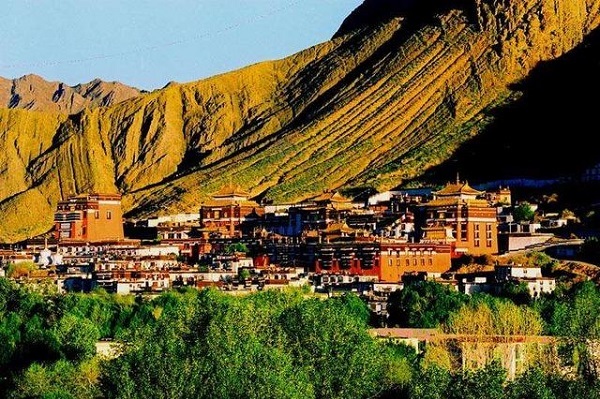
Tashilhunpo Monastery Complex.
Frequently Asked Questions
-
What is the best time to visit Tashilhunpo Monastery?
The ideal time to visit Tashilhunpo Monastery is during the spring and autumn months (April to June and September to October) when the weather is mild and the skies are clear. If you’re interested in experiencing the Tashilhunpo Monastery Festival, plan your visit around the festival dates, typically held in the summer. -
How do I get to Tashilhunpo Monastery from Lhasa?
You can reach Tashilhunpo Monastery by hiring a private car, which takes about 5 hours to cover the 269 km from Lhasa. Alternatively, you can take a train to Shigatse and then transfer to a local vehicle to the monastery. -
Are there entrance fees for Tashilhunpo Monastery?
Yes, there is an entrance fee. From May to October, the ticket price is 100 CNY, while from November to April, it is reduced to 55 CNY. Tickets can be purchased at the entrance. -
What should I wear when visiting the monastery?
It’s advisable to wear comfortable, modest clothing that covers your shoulders and knees, as a sign of respect for the sacred space. Layered clothing is recommended due to the high altitude and variable weather conditions. -
Can I take photos inside the monastery?
Photography policies can vary, so it’s best to check for specific guidelines upon arrival. Generally, photography is allowed in certain areas, but always be respectful and avoid taking photos during prayer sessions or of monks without permission. -
What are the must-see attractions within Tashilhunpo Monastery?
Key highlights include Coqen Hall, the Chapel of Jampa, the four Great Dratsangs (monastic colleges), and the tombs of the fourth and tenth Panchen Lamas. Don’t miss the stunning views from the kora walkway! -
Are there guided tours available?
Yes, guided tours are available and highly recommended for a richer understanding of the monastery’s history and significance. Local tour guides can provide insights into Tibetan Buddhism and the monastery’s architectural features. -
What should I keep in mind regarding altitude sickness?
Tashilhunpo Monastery is situated at an altitude of 3,800 meters (12,000 feet). It’s important to acclimatize properly before your visit. Stay hydrated, avoid strenuous activity upon arrival, and consider consulting a doctor for altitude sickness prevention tips.
Final Thoughts on Your Trip
As your journey through the Tashilhunpo Monastery Complex comes to a close, take a moment to reflect on the profound experiences that this sacred site offers. The monastery, with its breathtaking architecture, vibrant spiritual practices, and rich cultural heritage, is not merely a destination but a gateway into the heart of Tibetan Buddhism.
Walking among the ancient halls, you’ve witnessed the dedication of the monks, the beauty of the giant thangkas, and the serene devotion of pilgrims making their way around the kora. Each step here echoes with centuries of history and reverence, fostering a unique connection between the past and the present.
Whether you were moved by the tranquility of the sacred spaces, inspired by the vibrant festivals, or captivated by the stunning vistas that surround the monastery, Tashilhunpo has undoubtedly left an indelible mark on your spirit. As you continue your travels, carry with you the lessons of resilience, faith, and community that this remarkable place embodies.
May your memories of Tashilhunpo serve as a guiding light on your journey ahead, encouraging you to seek beauty, understanding, and deeper connections wherever your adventures may lead. Safe travels!